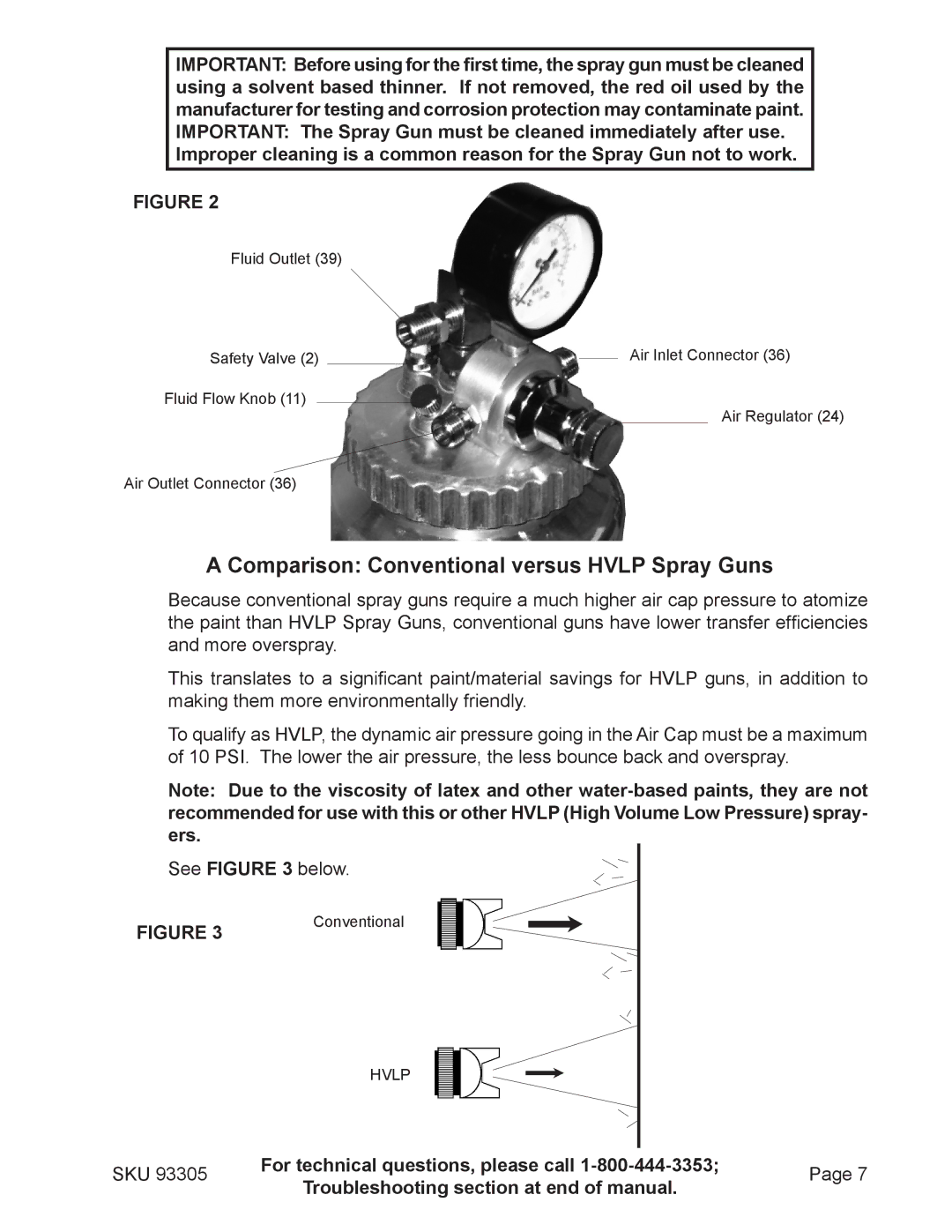
IMPORTANT: Before using for the first time, the spray gun must be cleaned using a solvent based thinner. If not removed, the red oil used by the manufacturer for testing and corrosion protection may contaminate paint. IMPORTANT: The Spray Gun must be cleaned immediately after use.
Improper cleaning is a common reason for the Spray Gun not to work.
FIGURE 2
Fluid Outlet (39)
Safety Valve (2) |
|
|
|
|
| Air Inlet Connector (36) | ||
|
|
|
|
| ||||
Fluid Flow Knob (11) |
|
|
|
|
|
|
| Air Regulator (24) |
|
|
|
|
|
|
| ||
|
|
|
|
|
|
|
| |
Air Outlet Connector (36) |
|
|
|
|
|
|
| |
A Comparison: Conventional versus HVLP Spray Guns
Because conventional spray guns require a much higher air cap pressure to atomize the paint than HVLP Spray Guns, conventional guns have lower transfer efficiencies and more overspray.
This translates to a significant paint/material savings for HVLP guns, in addition to making them more environmentally friendly.
To qualify as HVLP, the dynamic air pressure going in the Air Cap must be a maximum of 10 PSI. The lower the air pressure, the less bounce back and overspray.
Note: Due to the viscosity of latex and other
See FIGURE 3 below.
FIGURE 3 | Conventional |
|
HVLP
SKU 93305 | For technical questions, please call | Page 7 | |
Troubleshooting section at end of manual. | |||
|
|
